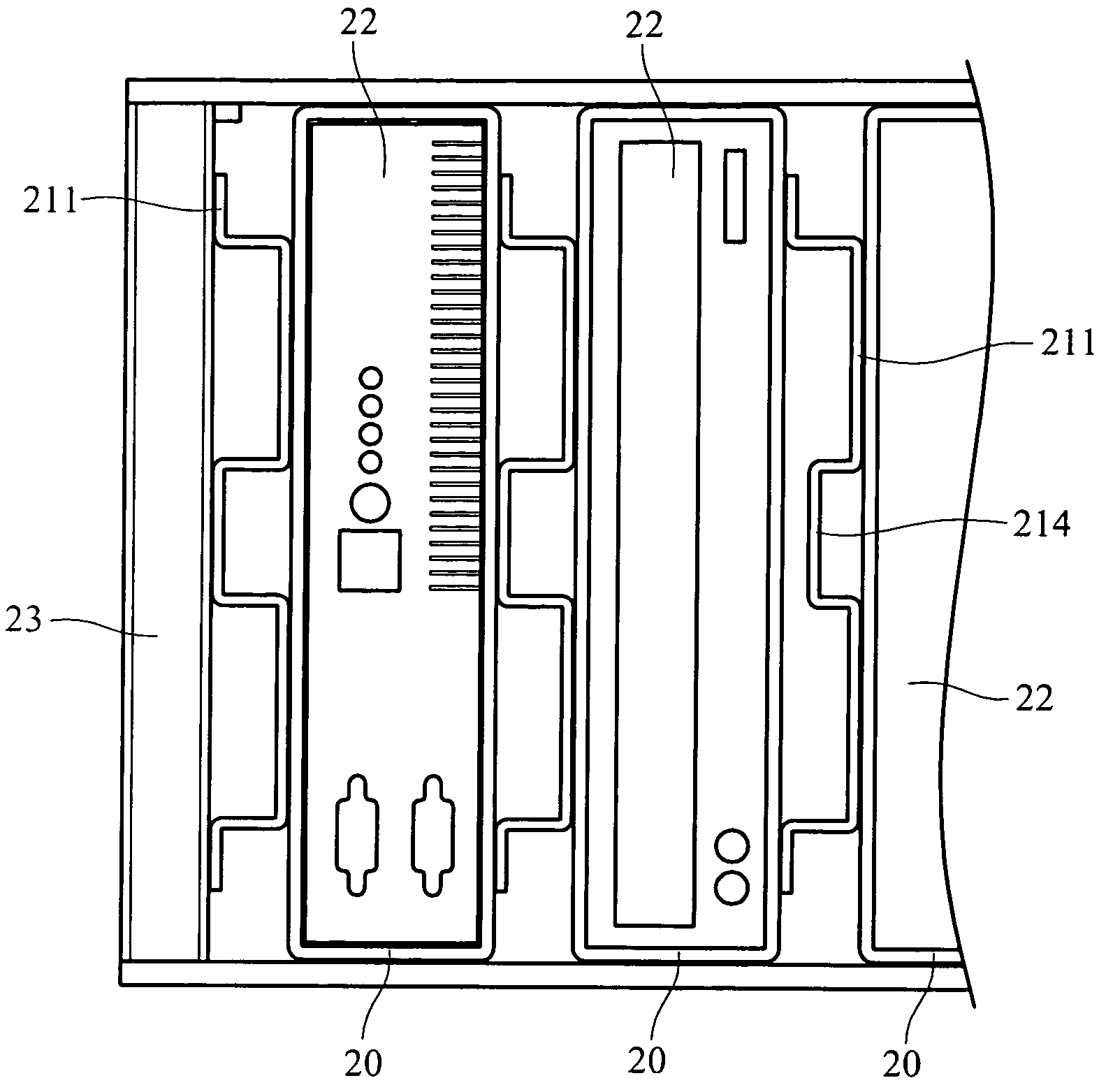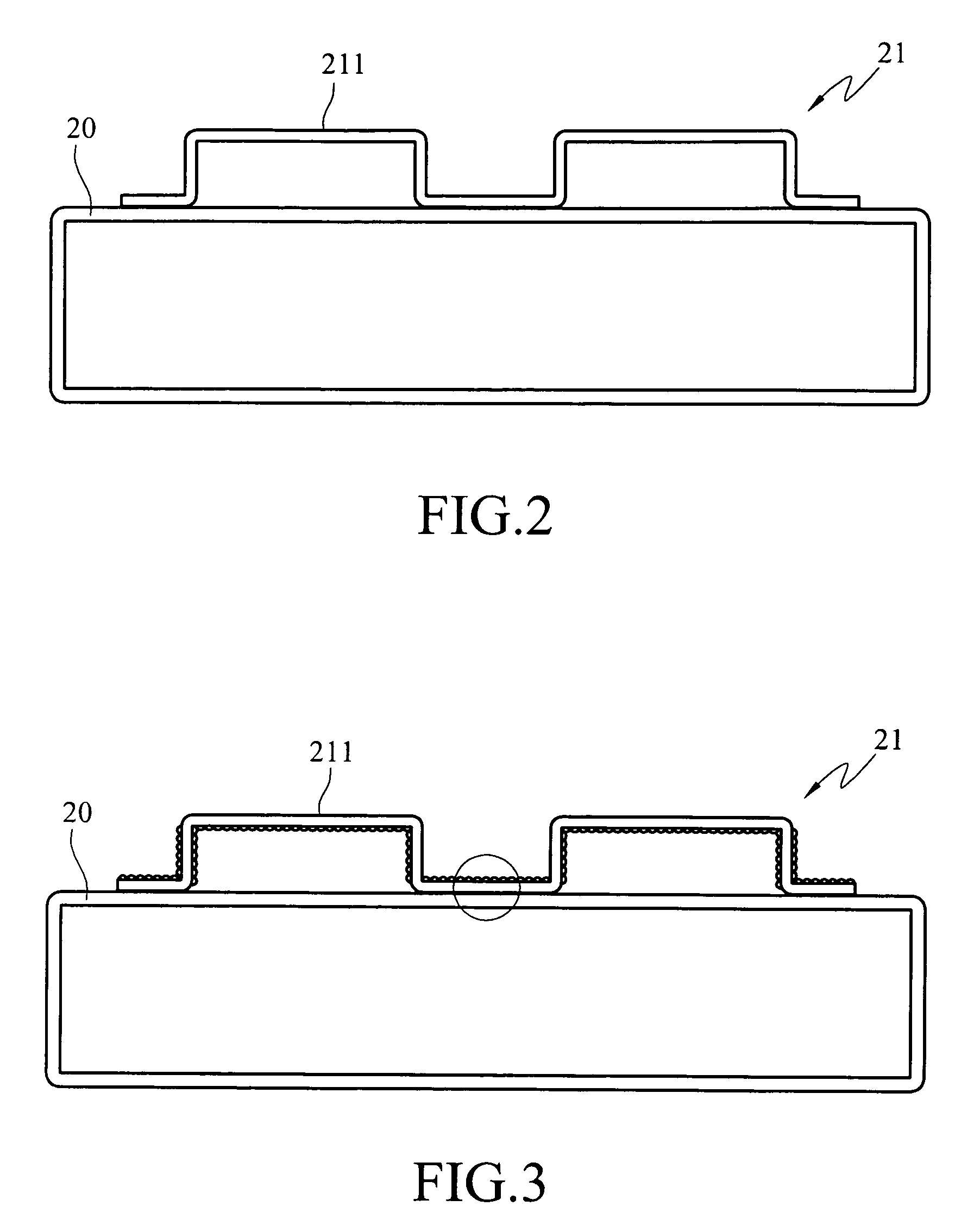Electronic equipment case structure
a technology for electronic equipment and case structure, applied in the direction of electrical apparatus casing/cabinet/drawer, instrument, solid-state device details, etc., can solve the problems of affecting the operation of the electrical apparatus, and the failure of the latch structure to couple the unit body in an upright manner. , to achieve the effect of increasing the surface area
- Summary
- Abstract
- Description
- Claims
- Application Information
AI Technical Summary
Benefits of technology
Problems solved by technology
Method used
Image
Examples
Embodiment Construction
[0014]Referring to FIG. 2, the electronic equipment case structure according to the invention includes a shell 20 and a blade-cooling portion 21. The shell 20 is hollow and has a housing compartment to hold electronic equipment. The blade cooling portion 21 includes a plurality of protrusive sections 211 that are spaced from one another at a selected distance to form a zigzag profile, to brace other elements that are in contact with the case, to provide support and partition. As the electronic equipment housed in the case is a heat-generating element, the case also should have a cooling function. Hence the shell and the blade-cooling portion are made of material of a high thermal conductive coefficient, such as aluminum, copper, silver, steel or the like. Besides using the material of a high thermal conductive coefficient, the cooling efficiency may also be enhanced by increasing the surface area of the blade-cooling portion 21. This may be accomplished by distributing a plurality o...
PUM
 Login to View More
Login to View More Abstract
Description
Claims
Application Information
 Login to View More
Login to View More - R&D
- Intellectual Property
- Life Sciences
- Materials
- Tech Scout
- Unparalleled Data Quality
- Higher Quality Content
- 60% Fewer Hallucinations
Browse by: Latest US Patents, China's latest patents, Technical Efficacy Thesaurus, Application Domain, Technology Topic, Popular Technical Reports.
© 2025 PatSnap. All rights reserved.Legal|Privacy policy|Modern Slavery Act Transparency Statement|Sitemap|About US| Contact US: help@patsnap.com



